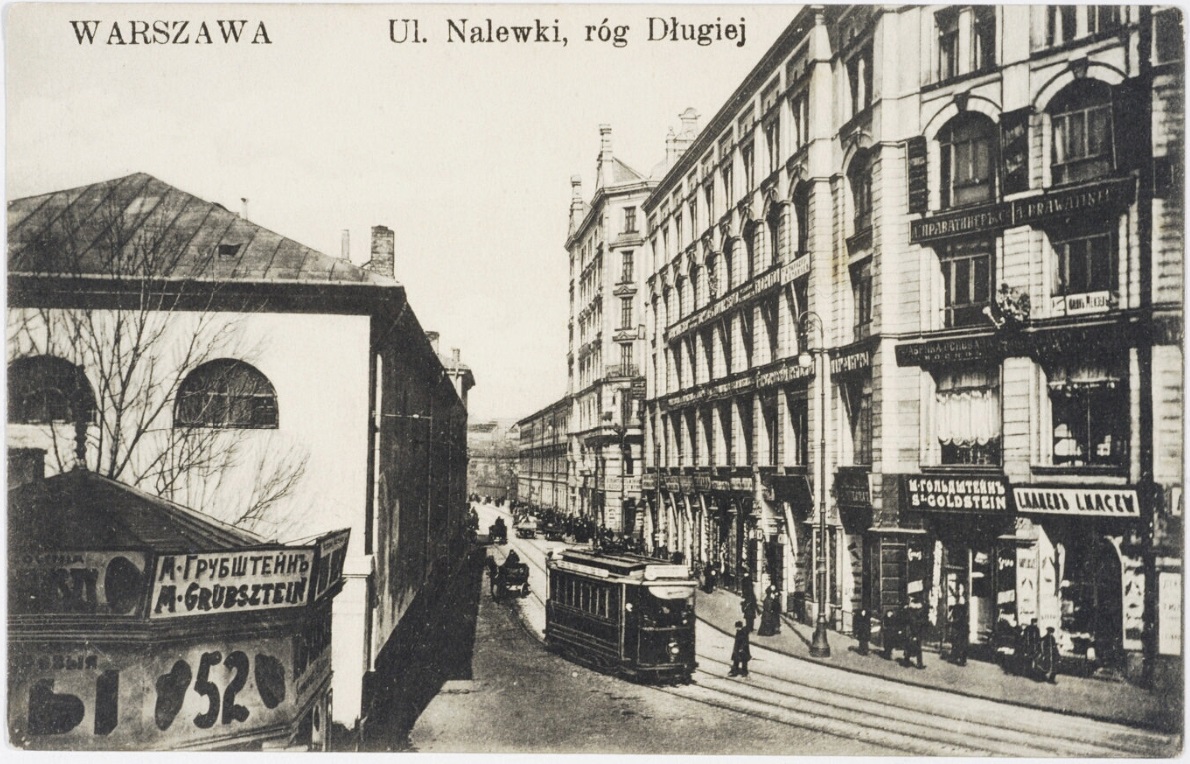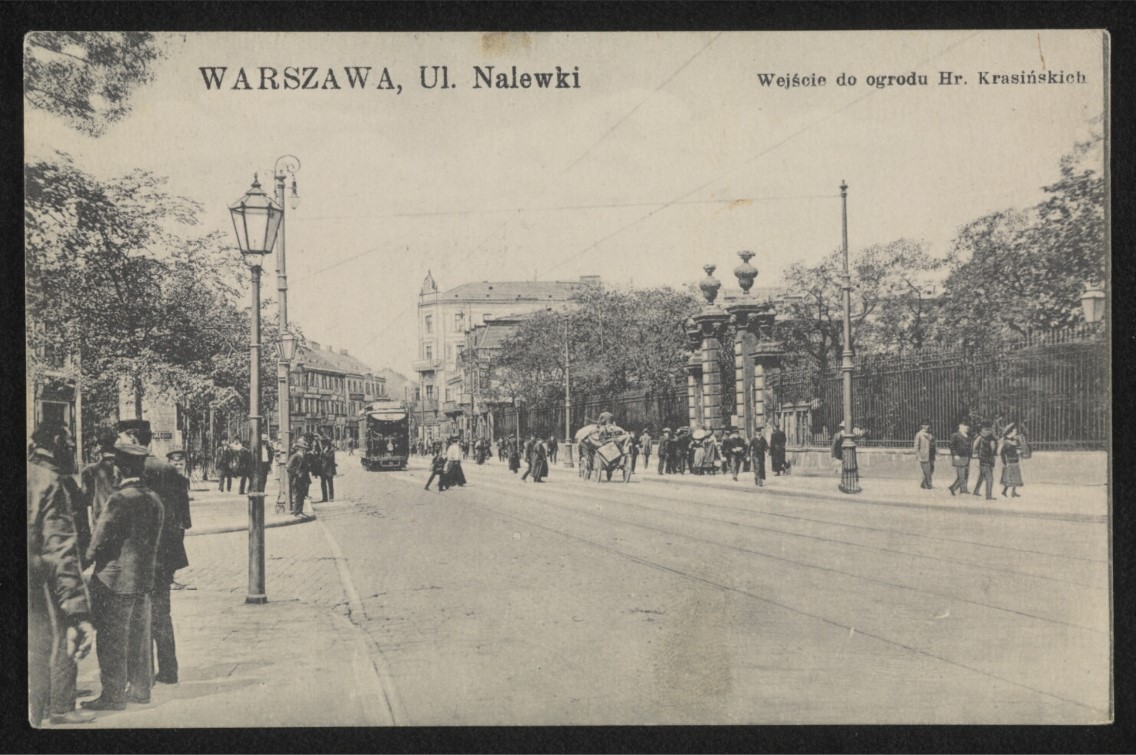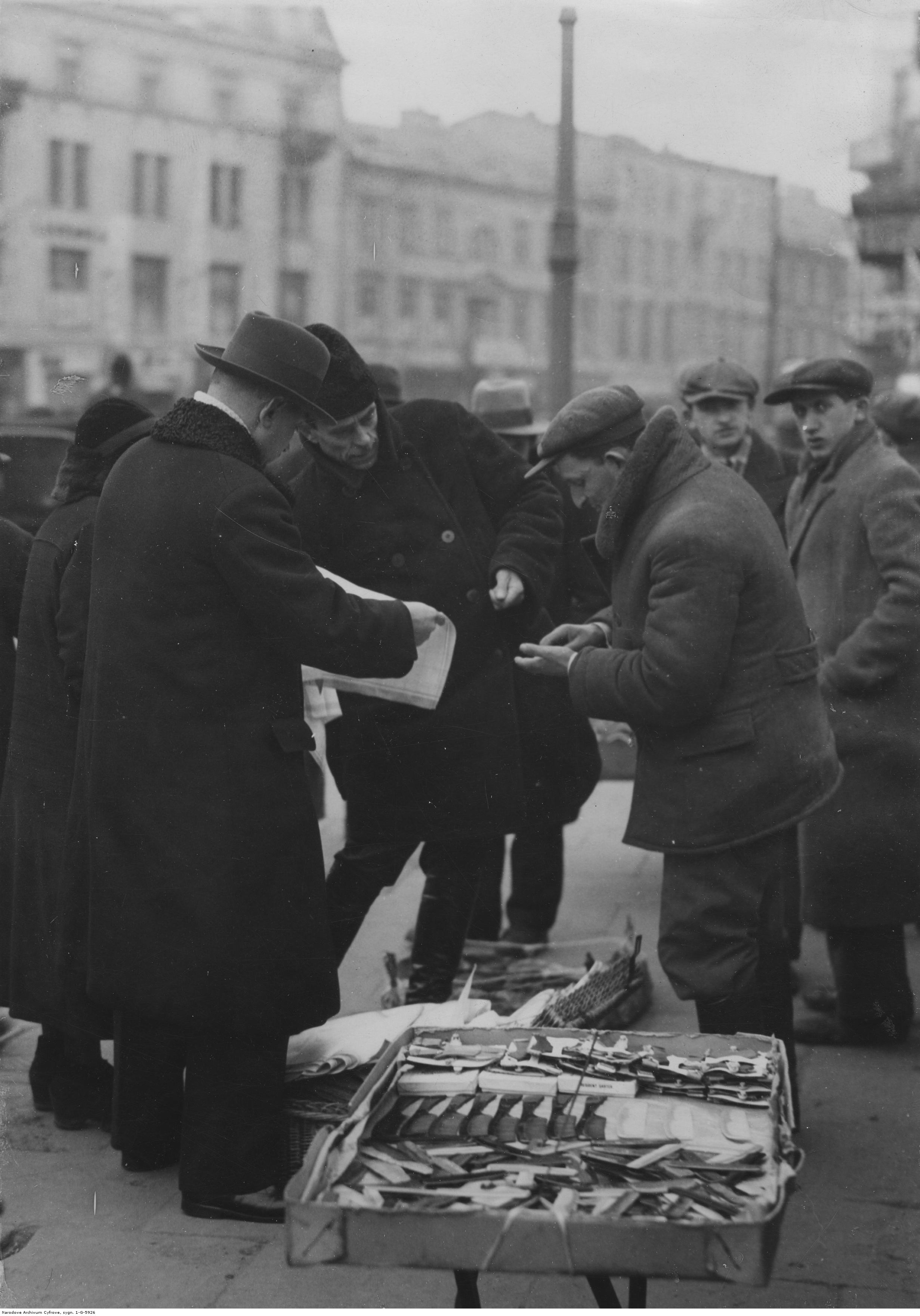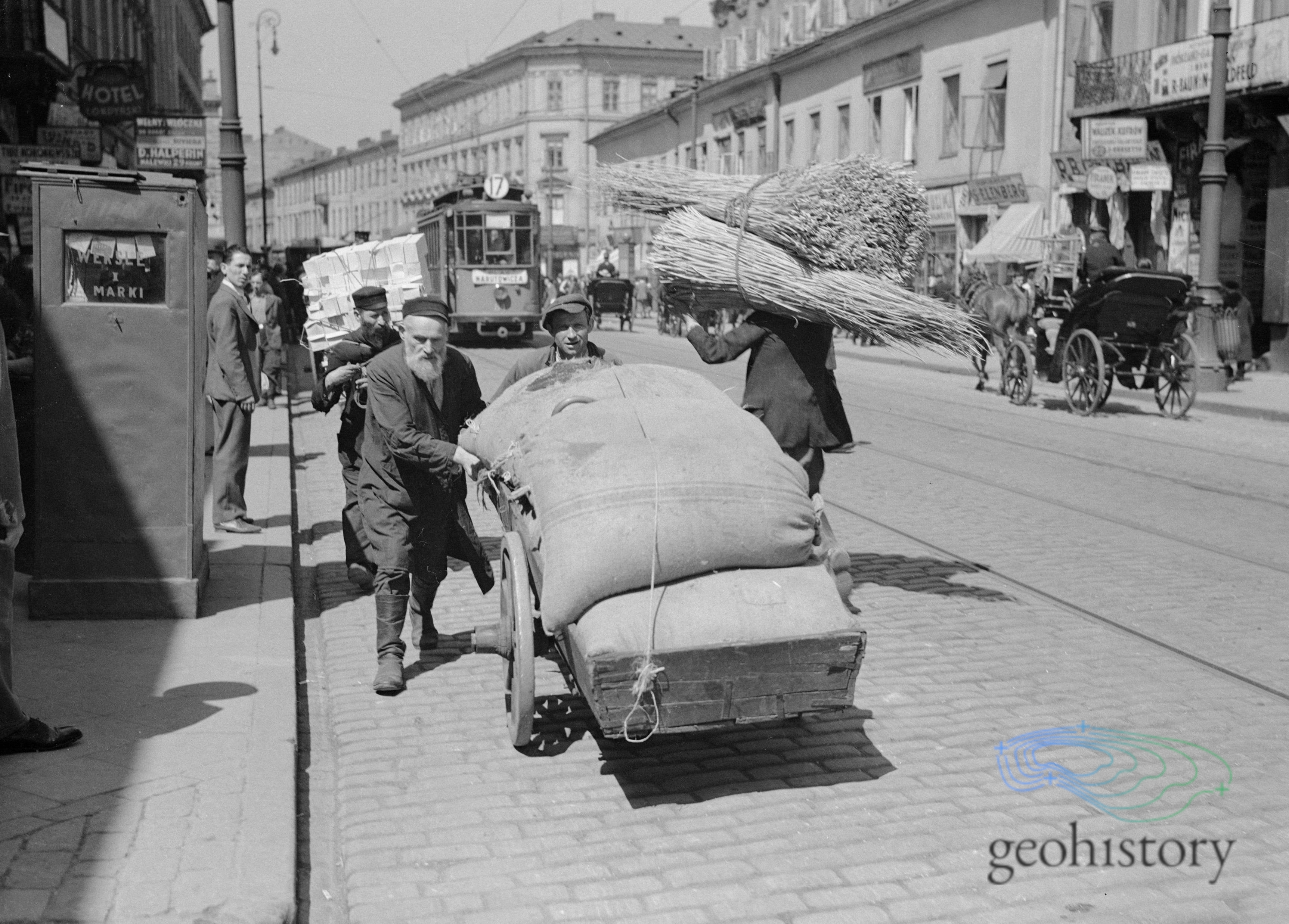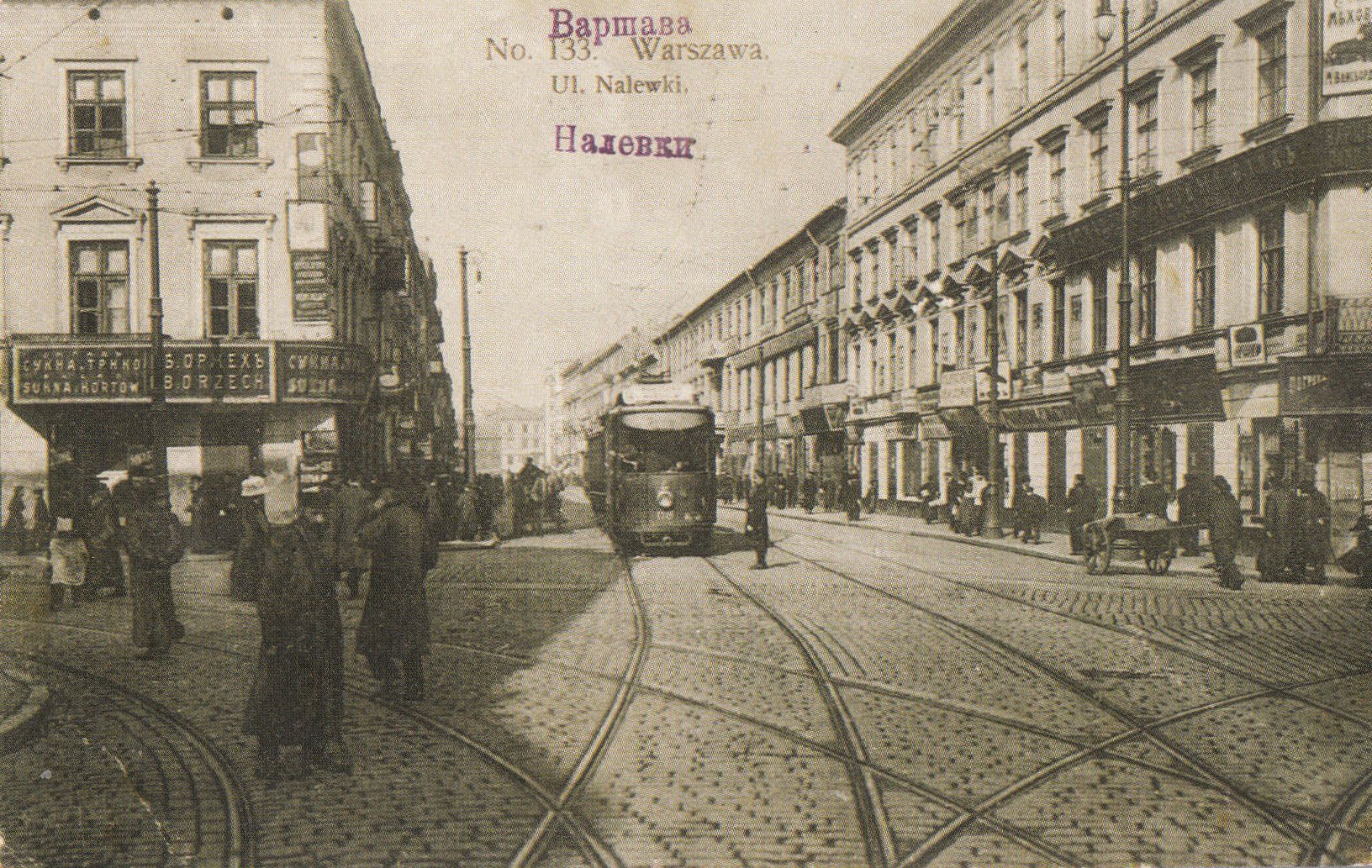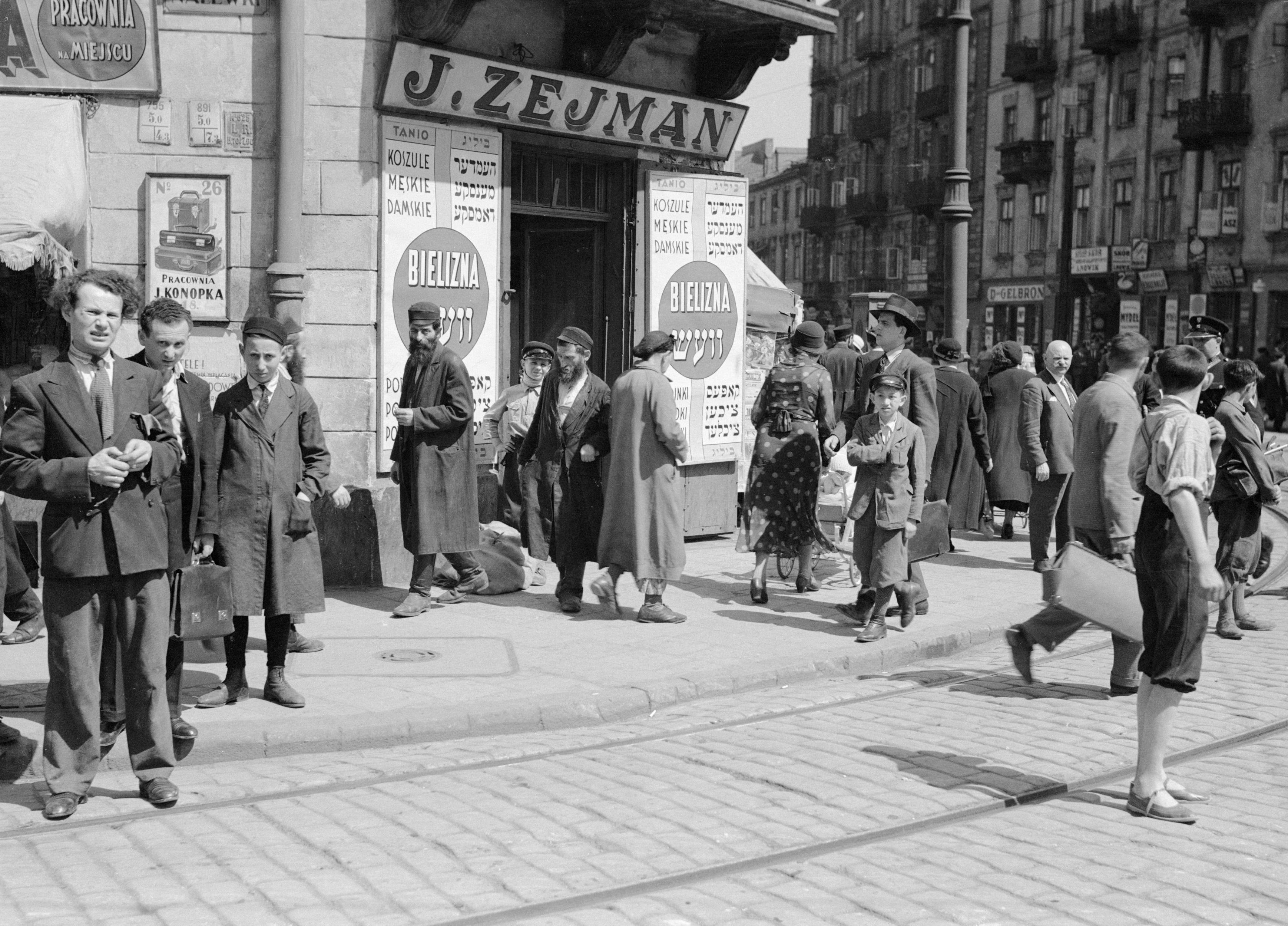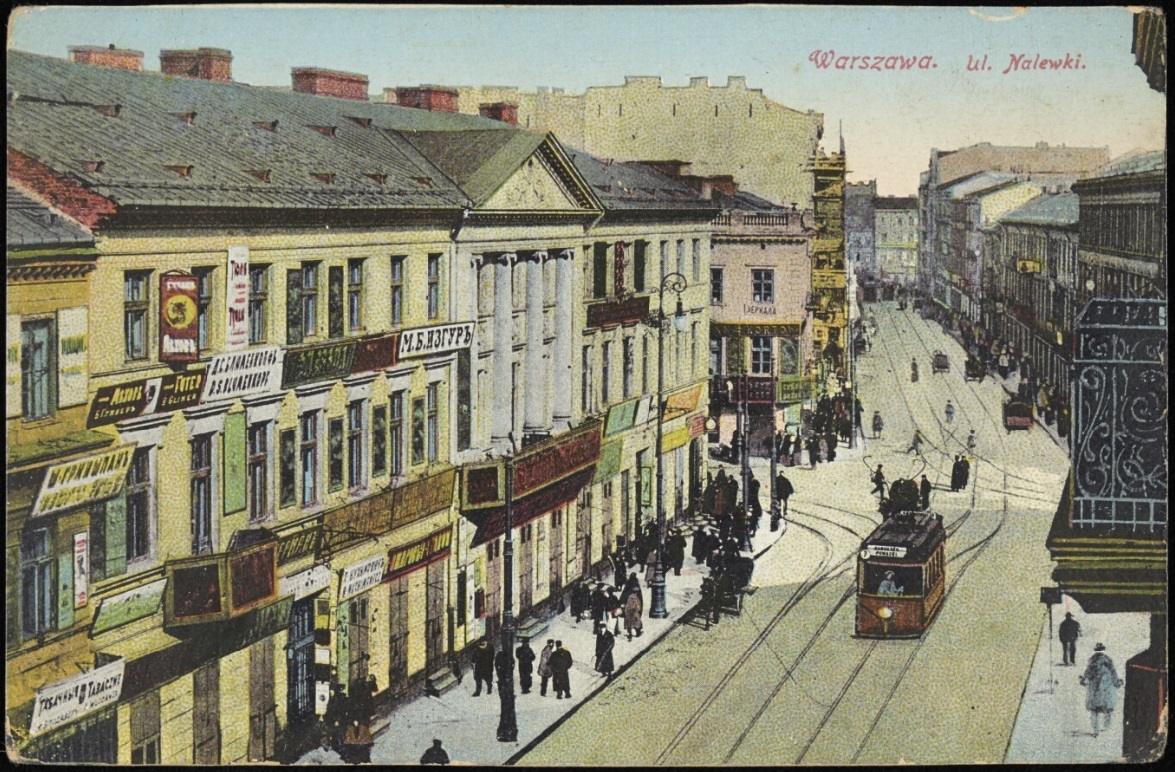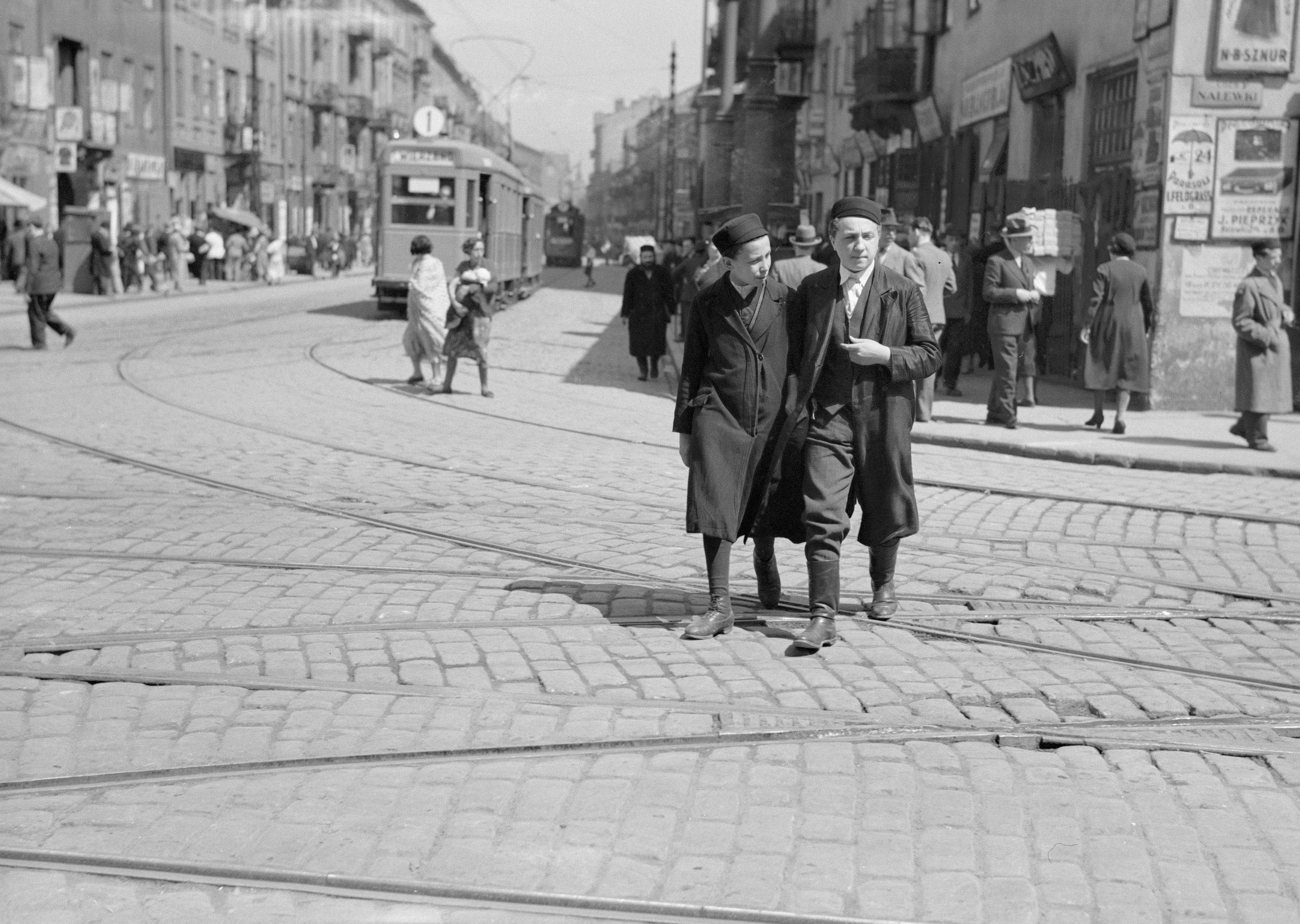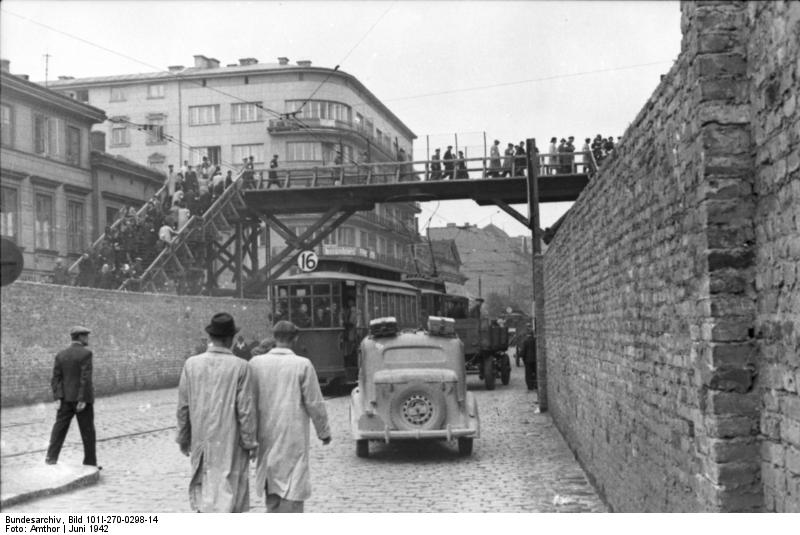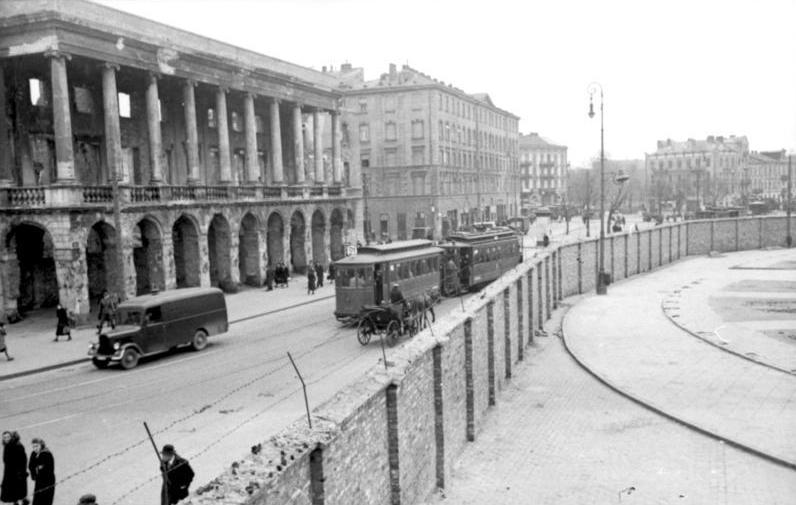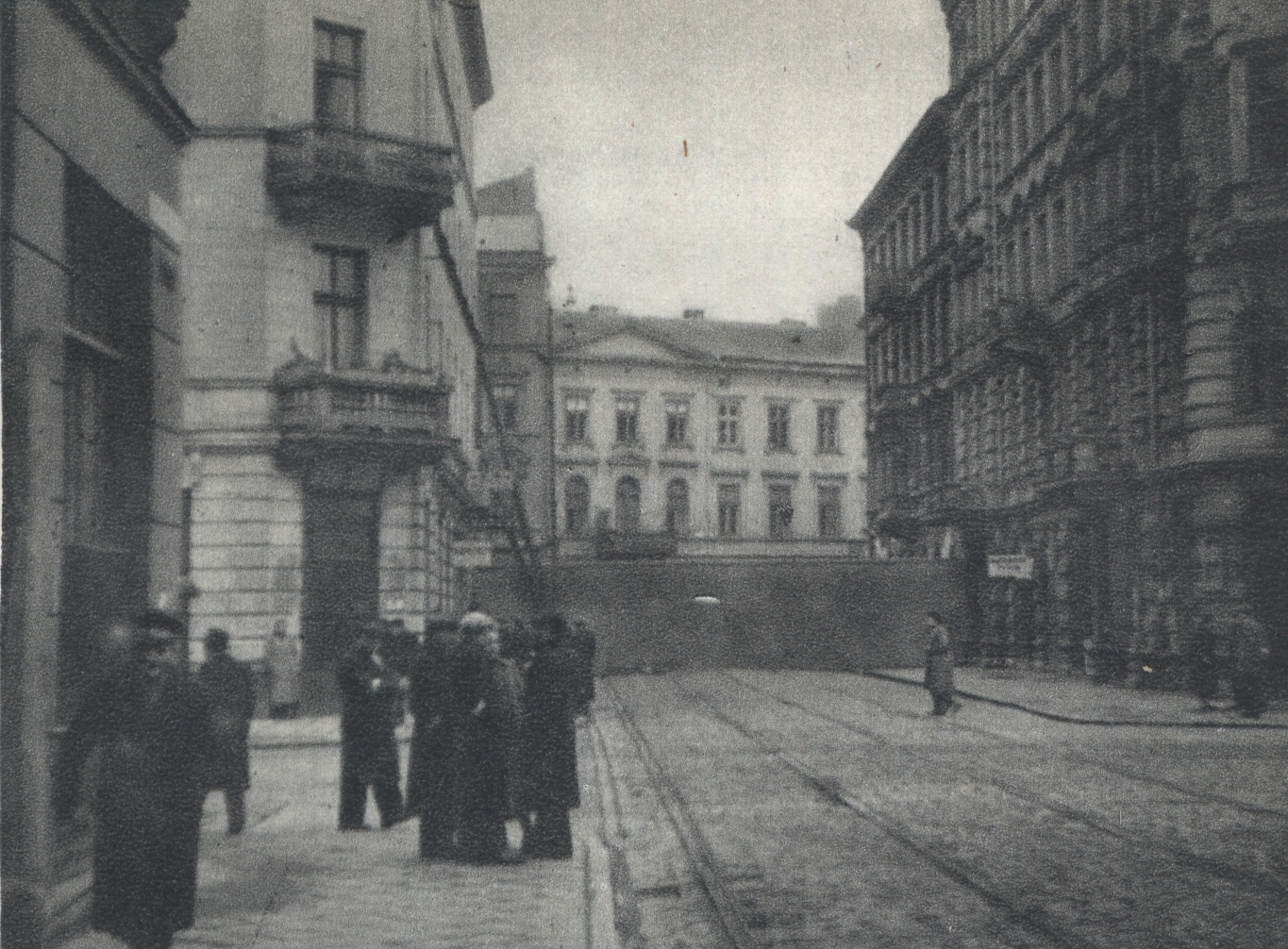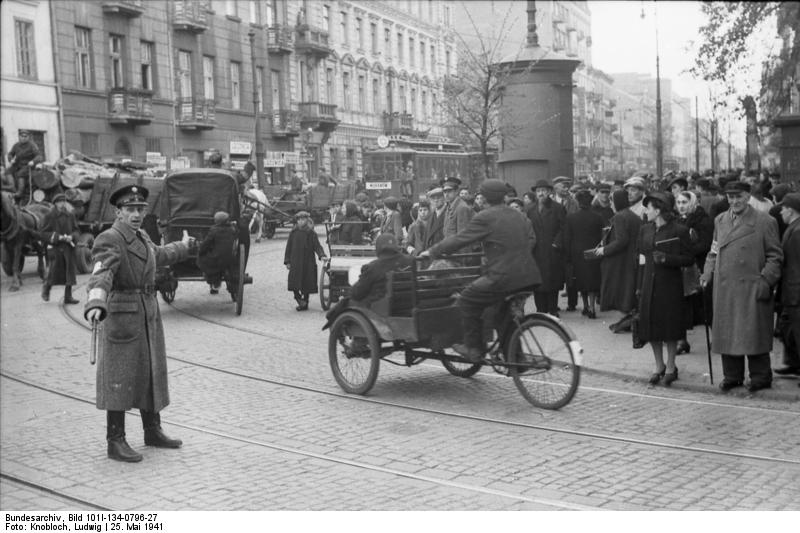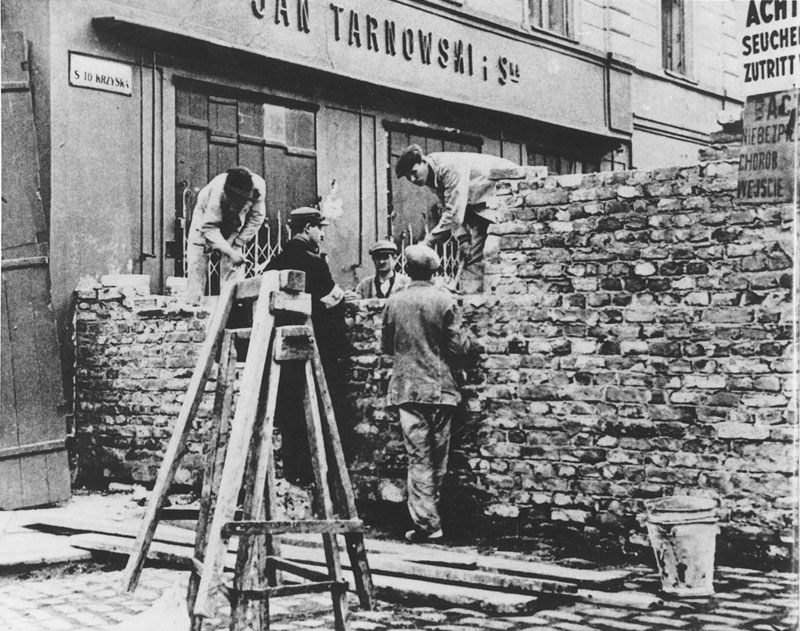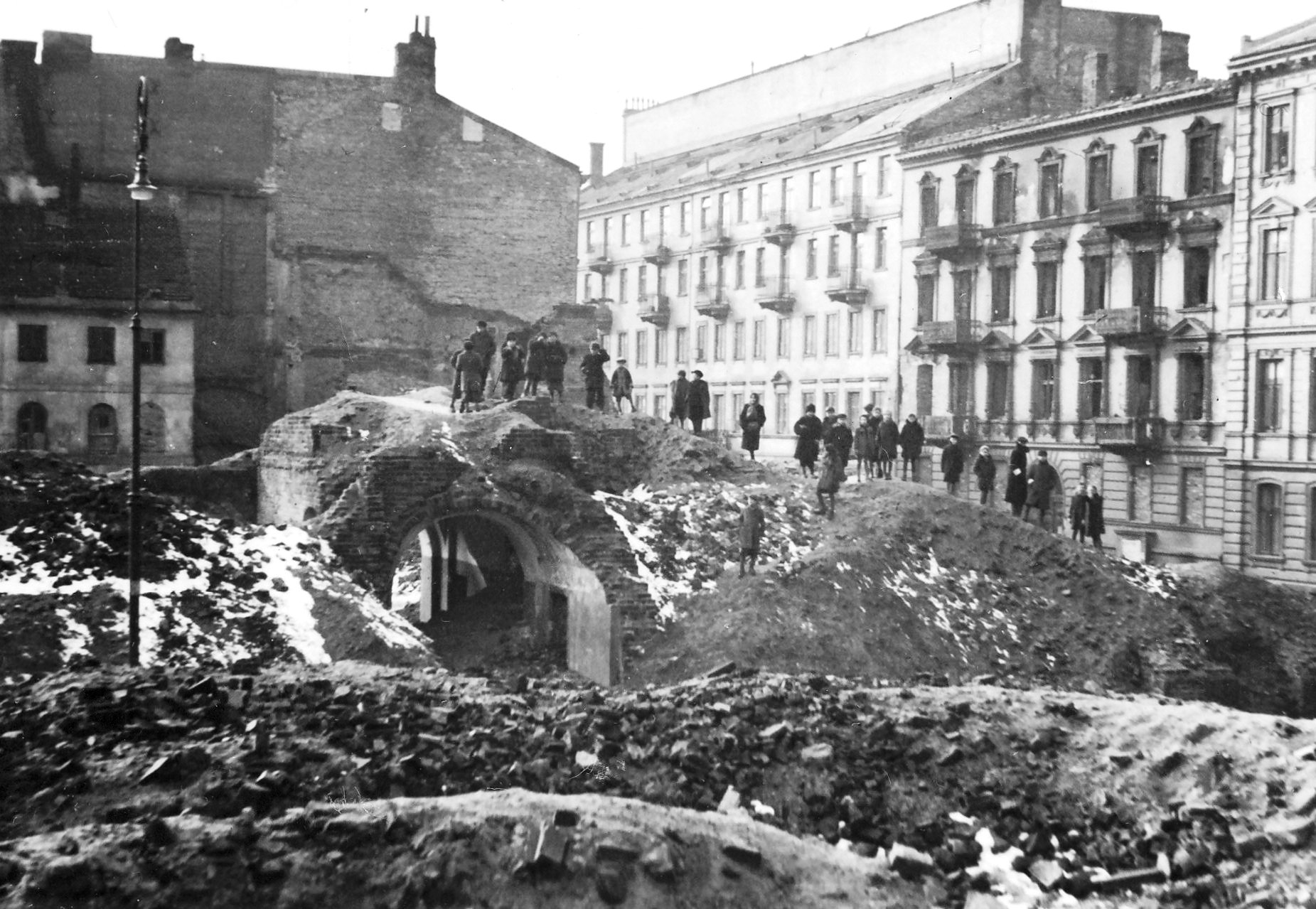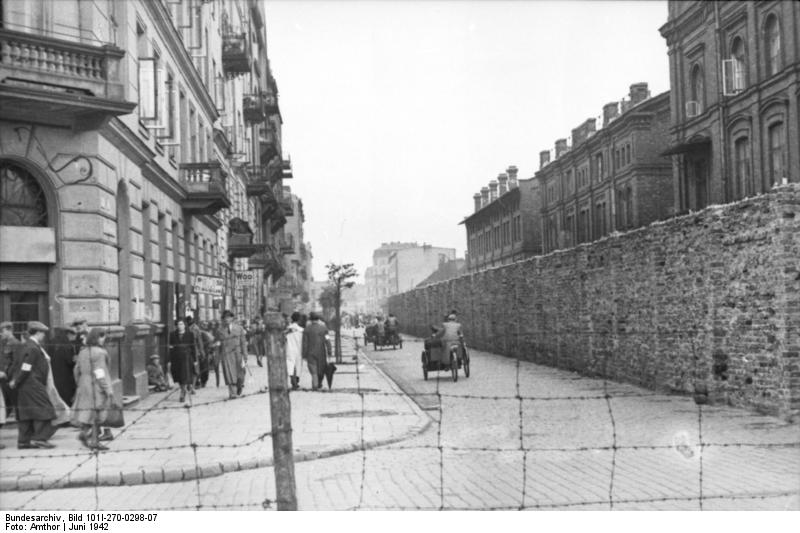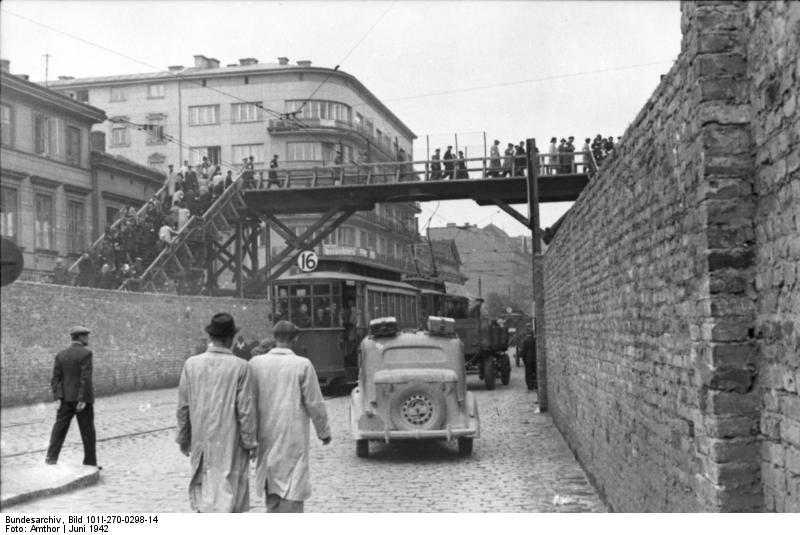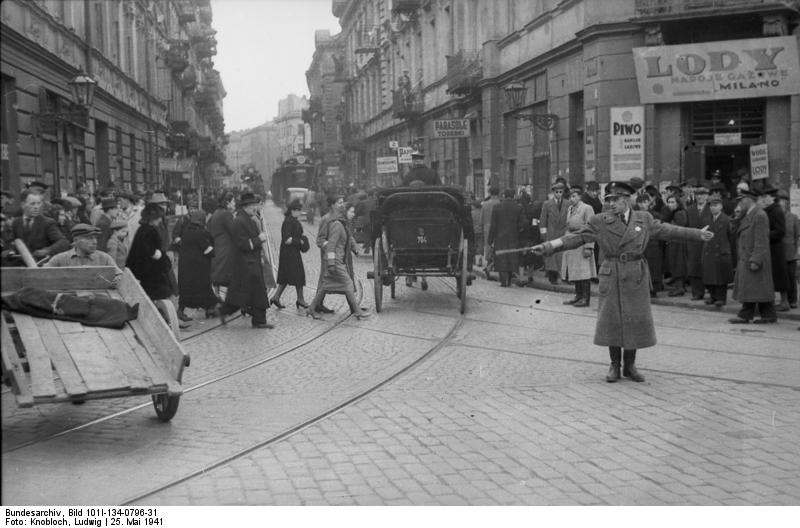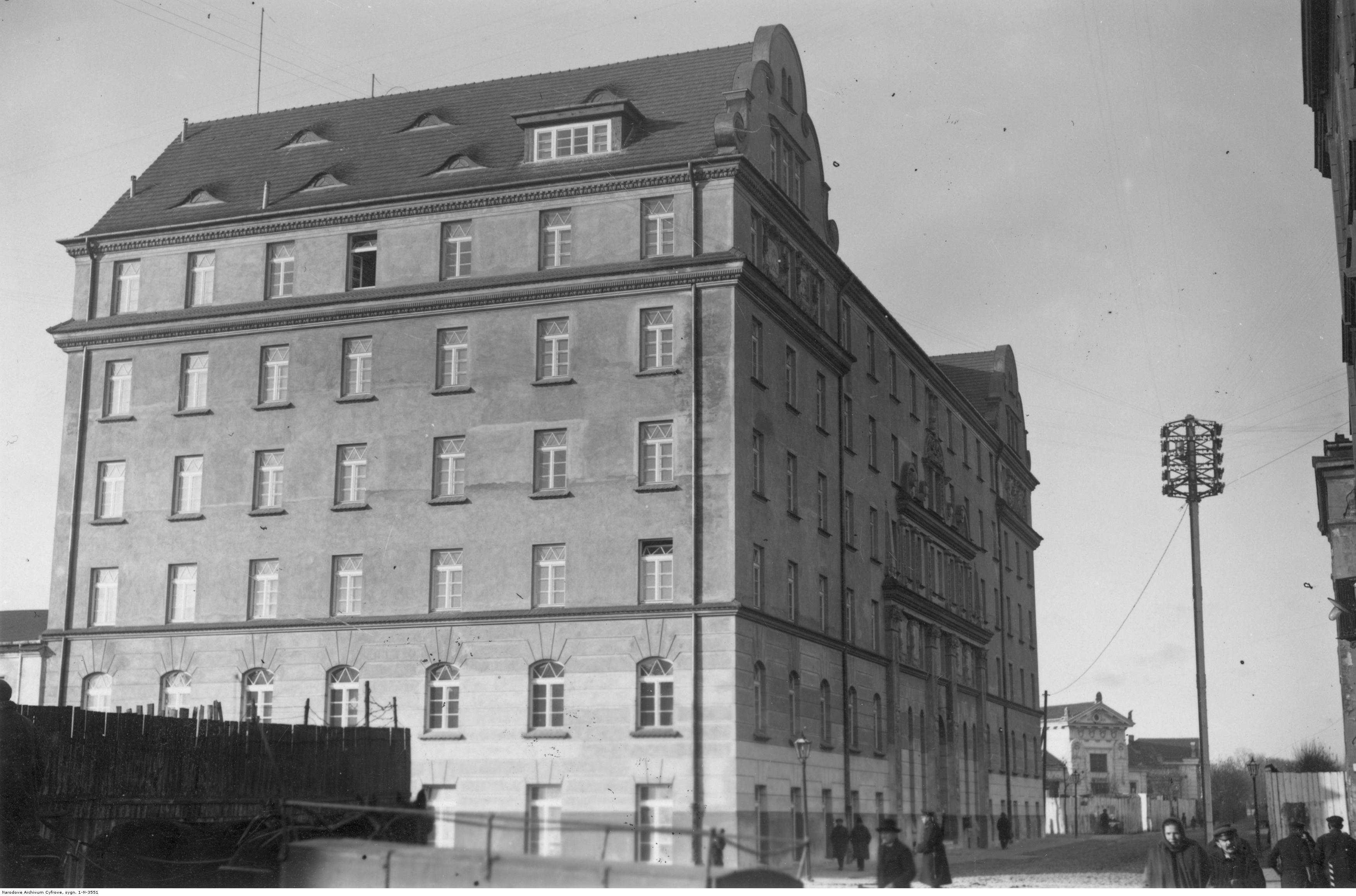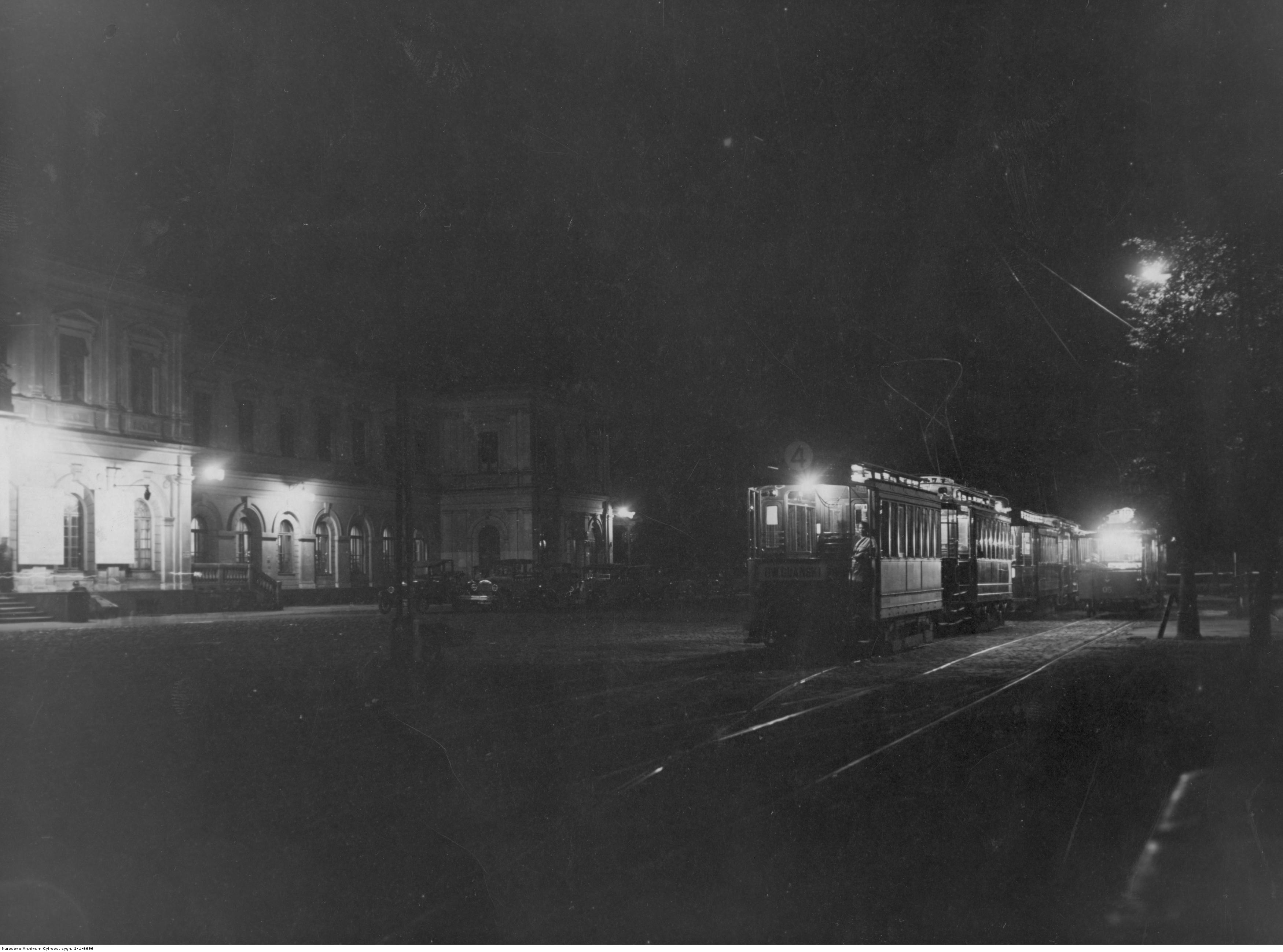Themed Walks: Jewish Warsaw
After the Second World War, many streets disappeared from the map of Warsaw. This unique artery left such a void that it will probably never be filled again. With the disappearance of the pre-war Nalewki Street, the heart of Jewish Warsaw stopped beating. Not even one house has survived from the old, noisy, vibrant street. A walk around Nalewki is unique. It’s an attempt to recreate the pre-war and war atmosphere of the city. During the journey you will learn: - Where the middle-school where the future leader of the Warsaw Ghetto Uprising studied was, - Which restaurant the food was stolen from, - Where in Nalewki there was a piece of Venice and what happened to the inhabitants of this place, - Where an exceptional woman lived who had financially supported a family of more than a dozen people during the war, - Where one of the largest prayer houses in Warsaw was. We invite you to this unique walk in the footsteps of places and stories that are difficult to imagine today. Thanks to stories and archival photographs you will be able to immerse yourself in the atmosphere of the mythical Nalewki.
Exercise for your imagination - this is how you can call the walk around the pre-war Nalewki. A large, busy, densely populated street during the Second World War completely disappeared from the map of the capital. Thus, the heart of Jewish Warsaw stopped beating. During the trip we will guide you through places that do not exist, and on the way you will learn: - Where before the war in Nalewki you could drink milk straight from the cow, - Where the unlucky lottery winner lived who instead of becoming a millionaire became a beggar, - Where in the middle of the occupation the Polish and Jewish flags fluttered, - Where the inhabitants of Nalewki sought shelter during the liquidation of the ghetto, - What the end of Nalewki Street looked like. Go back in time and feel the vibrating atmosphere of Nalewki, the street of trade, the hustle and colorful characters.
The area of the small ghetto, created by the Germans during the occupation, was considered more wealthy, and getting a flat here was not easy. Gradually, however, its area was reduced, until finally, in July 1942, it was liquidated. At that time, about 265,000 of its residents were deported to extermination camps. During our walk through the areas of the so-called former small ghetto you will learn: • where there was a smuggling point between the small ghetto and the Aryan part of the city; • what remains of the ghetto have survived to this day; • why Mordechaj Pinkiert's company became famous in the ghetto; • who were the blue policemen and why the Germans didn’t trust them. Welcome!
The Warsaw small ghetto, stretching from Złota street in the south to Chłodna in the north, existed from November 1940 to July 1942. At that time, it was considered safer and more prosperous than the so-called large ghetto. During our walk around the south-eastern part of the former small ghetto you will learn: • which restaurants were considered the most exquisite here: • who was educated in the only teaching institution legally operating in the ghetto; • where Mary Berg, the author of “Diary from the Warsaw Ghetto” lived; • in which restaurant Władysław Szpilman performed; • whom Janusz Korczak characterized as “cham, idiot, megalomaniac and pest". Welcome!
At the time of the creation of the Warsaw ghetto, a large part of the city became a prison. Behind its walls over 400,000 people were crowded. Most of them suffered from poverty, hunger, often infectious diseases that spread at an alarming rate. Residents were united by one goal - survival. Their stories, and most of all the realities of life in this real hell on earth, you will learn in a moment. You will also learn: - what percentage of blue policemen cooperated with the Polish Underground, - where the smuggling to the ghetto took place, - what was the fate of a model Sabina Wójcikiewicz. In addition, you will have the opportunity to walk around the places where once there was one of the ghetto gates, the famous footbridge, or the main building of the Jewish community. Let's start this fascinating journey!
The Warsaw ghetto, like most cities in the world, had its most important places, where the life of the district was vibrant, the fate of the inhabitants was weighing, and traffic and trade accumulated. People, surrounded by a wall, tried - despite extremely difficult living conditions - to get some normality from the world around them. Soon you will hear stories that will make it easier for you to understand the situation of the inhabitants of the district - you will learn about their problems, everyday worries and even rare moments of happiness. A non-existent city will take you to an office, a hospital inspection or an afternoon performance in the theater. Thanks to the heard stories you will learn: - where Emanuel Ringelblum, the founder of the famous archive lived, - which way the weapons were smuggled for the Jewish fighters, - the destruction of which building was the symbolic end of the ghetto uprising, - where theaters functioned in the ghetto. Non-existent, but saved from oblivion city will eagerly tell you its tragic story. Do not hesitate, just go for a walk through its streets!
The story of Praga without knowing the abundantly rich history of the local Jews would certainly be incomplete. We cannot afford such a sin of abandonment, therefore, in a moment, we will go for a walk along the streets of the right-bank district of Warsaw to discover places connected with the Jewish legacy. During this journey you will learn about the history of many interesting places, you will hear about Jewish residents who had influence on the character of this place. We will look into crowded rent tenements full of people, recreate the look of now-defunct prayer houses, learn about the stories of Jewish residents both in the interwar period and the dark times of the Second World War. Listen carefully to the city's story and you will learn: - what a typical Praga synagogue looked like, - who the most well-known tenant of the Jewish Academic House was, - which staircase attracts contemporary photographers and filmmakers, - how the celebration of Sukkot was celebrated on Targowa Street, Soon you will find out that learning about Praga's Judaics is a fascinating adventure. So let's not waste time and let's get going!

